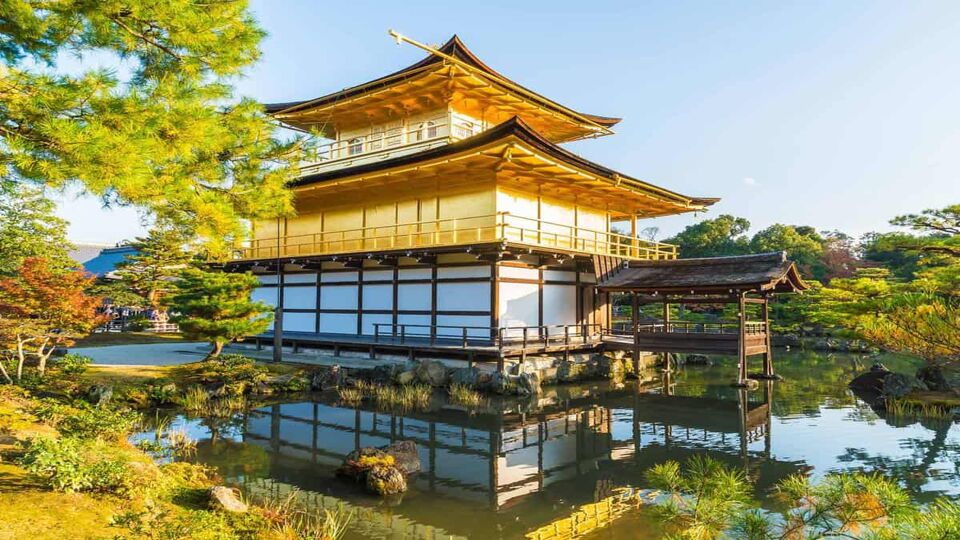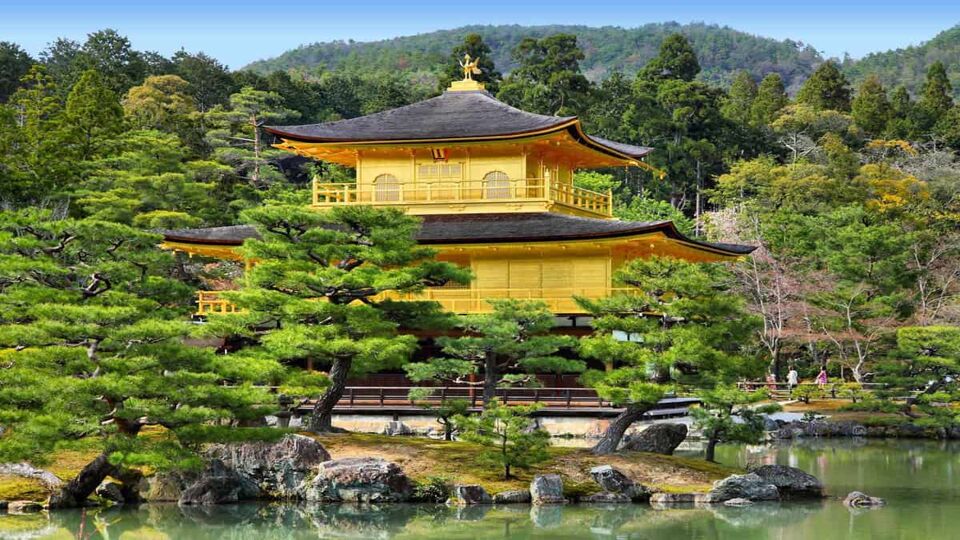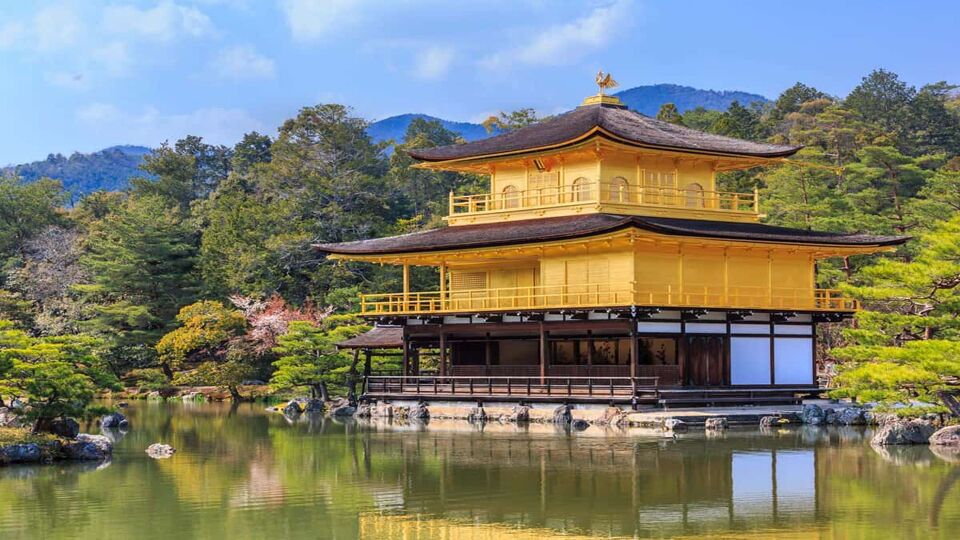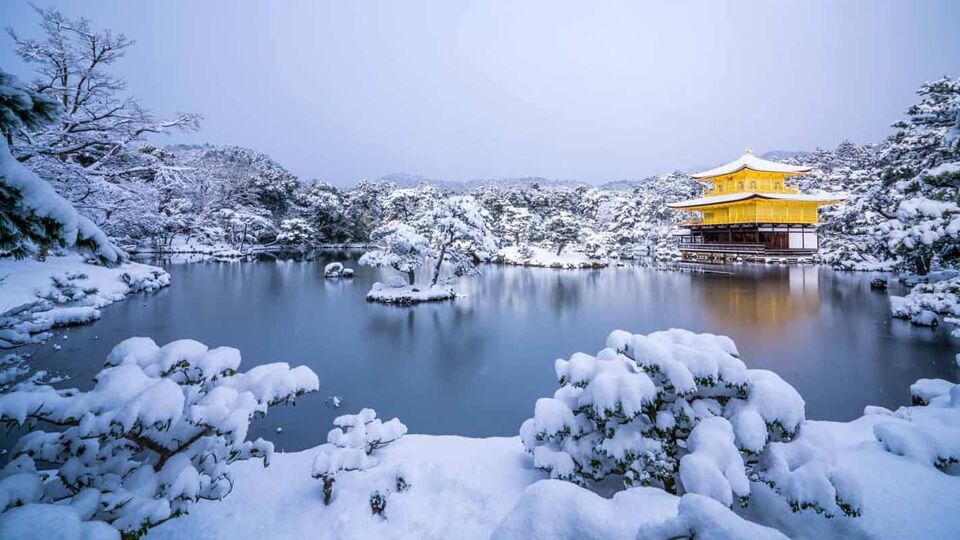
Travel bucket list idea:
Kinkakuji Temple
Kyoto, Kansai, Japan
First built in 1397 as a shogun Ashikaga Yoshimitsu’s retirement villa, but then transformed into a Zen temple upon his death in 1408, no sight better highlights the former capital’s glory than this gilded temple casting a shimmering reflection into its islet-studded pond.
Taking in the view while strolling Kinkakuji’s garden pathways is a timeless experience. So, despite having UNESCO World Heritage status, it can be a surprise to hear that the current structure only dates to 1955. That’s when Kinkakuji was rebuilt after being burnt down by a crazed monk in 1950.
Hats off to the artisans who painstakingly recreated it – it’s stunning

Logistics
Getting there & doing it
Like most Kyoto sites, Kinkakuji is easy to do by yourself. The only issue can be working out how best to get there. As with other attractions in north-western Kyoto, use the city’s extensive bus network. From the bus terminal at Kyoto Station, take the number 101 or 205 bus roughly 40 minutes to Kinkakuji-michi. From the central Shijo-dori area, take bus number 12.
You’ll follow a set route that takes in the view across the pond, the head priest’s former living quarters which are known for their painted sliding doors, through the temple’s gardens to the Sekkatei Teahouse.
When to do it
Kinkakuji Temple is open all year round, seven days a week. As it’s an outdoor attraction, avoid the oppressive heat and humidity of July and August, or take precautions against heatstroke.





